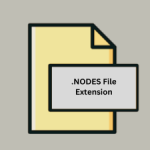.BAND File Extension

GarageBand Project
| Developer | Apple |
| Popularity | |
| Category | Audio Files |
| Format | .BAND |
| Cross Platform | Update Soon |
What is an BAND file?
The .BAND file extension is associated with a specific type of file format used for various purposes. In this article, we will explore the origin, history, technical specifications, advantages, disadvantages, and methods for opening and converting .BAND files on different platforms.
More Information.
The history of .BAND files is closely linked to the software applications that use them.
These files have been used for various purposes, including but not limited to:
- Music: .BAND files were initially used in music production software such as GarageBand and Band-in-a-Box. They contained musical compositions, tracks, and settings.
- Graphics: Some graphics design software, like BandLab, used .BAND files to store project files, including image layers, effects, and adjustments.
- Virtual Instruments: .BAND files have been employed in virtual instrument libraries, preserving instrument settings, samples, and presets.
Origin Of This File.
The .BAND file extension does not have a specific origin tied to it, as it can represent a wide range of file types created by different software applications.
The origin of a .BAND file depends on the software that generates it, making it a versatile and customizable file format for various applications.
File Structure Technical Specification.
The file structure and technical specifications of .BAND files depend on the software that generates them. Generally, .BAND files are binary files that contain a combination of data, settings, and metadata relevant to their respective applications.
How to Convert the File?
Windows:
-
- If you have a .BAND file generated by software like GarageBand, you can usually open and convert it within the same software.
- To convert .BAND files to other formats like MP3, WAV, or MIDI, you can use third-party audio conversion software. Some popular options include Audacity and Freemake Audio Converter.
- Install the chosen software, open the .BAND file in it, and then export or save the file in your desired format.
Linux:
-
-
- On Linux, you may not have native software to open .BAND files. You can try using software like Wine to run Windows-based applications that support .BAND files.
- Another option is to use online file conversion services that can convert .BAND files to more common formats. Upload your file to one of these services and choose the desired output format.
-
Mac:
-
- For Mac users, .BAND files can typically be opened directly using software like GarageBand, Logic Pro, or other applications associated with the file’s origin.
- To convert .BAND files to other formats, use the export or save functions within the software. Select the format you want to convert to and follow the prompts.
Android:
-
- Android devices may not have native support for .BAND files, but you can search for apps on the Google Play Store that can handle the specific .BAND file type you’re working with. Look for apps related to music production or graphic design if applicable.
- If no dedicated app is available, consider converting the .BAND file to a compatible format (e.g., MP3, JPEG) using a file conversion tool on a computer, and then transfer the converted file to your Android device.
iOS:
-
- iOS devices like iPhones and iPads may support .BAND files using apps like GarageBand or other software designed for creative purposes.
- To convert .BAND files on iOS, open the file within the relevant app and use the export or save options to choose the desired format, such as MP3 or JPEG.
Advantages And Disadvantages.
Advantages of .BAND files include:
- Versatility: .BAND files can serve various purposes, from music production to graphic design, making them flexible for creative projects.
- Preserves Settings: They often store project settings, allowing users to revisit and edit their work later.
- Collaboration: .BAND files facilitate collaboration in software where multiple users can work on the same project.
Disadvantages include:
- Proprietary Formats: Some .BAND files may be tied to specific software, limiting compatibility.
- Large File Sizes: Depending on the content, .BAND files can be large, consuming storage space.
How to Open BAND?
Open In Windows
Use Relevant Software: If you have a .BAND file created by music or audio software like GarageBand or Band-in-a-Box, you can open it by launching the corresponding software on your Windows computer. Simply double-click the .BAND file, or use the “File” > “Open” option within the software to browse and open your .BAND file.
Open In Linux
Use Wine: Linux doesn’t natively support .BAND files, but you can try running Windows-based software on Linux using Wine. Install Wine, and then use it to run the Windows software that can open .BAND files.
Open In MAC
Native Support: .BAND files are often associated with Mac software like GarageBand or Logic Pro. On a Mac computer, you can typically open .BAND files directly by double-clicking them, and they will open in the appropriate software.
Open In Android
App Support: If you have a .BAND file on your Android device, look for apps on the Google Play Store that are specifically designed to open and work with the type of .BAND file you have. For example, if it’s a music-related .BAND file, search for music production apps.
Open In IOS
Use Relevant App: On iOS devices like iPhones and iPads, .BAND files can be opened with apps like GarageBand. Simply locate the .BAND file on your device and open it with the appropriate app. You can then edit and work with the content.
Open in Others
Third-Party Software: If you’re using an operating system or platform other than Windows, Linux, Mac, Android, or iOS, you may need to explore third-party software or conversion options based on the specific type of .BAND file you have. Look for software that supports the format or consider converting the file to a more widely supported format using a file conversion tool.













